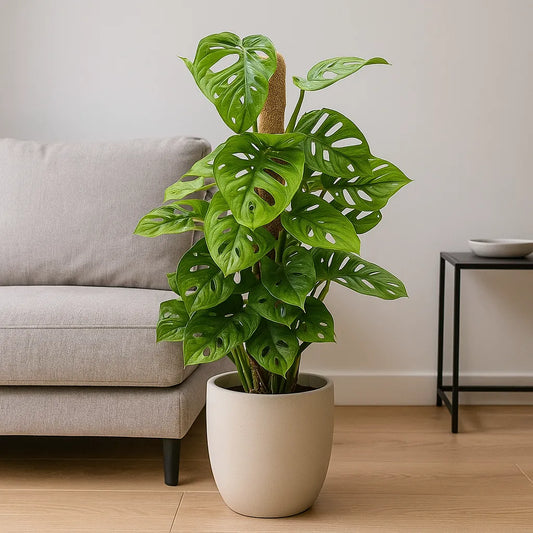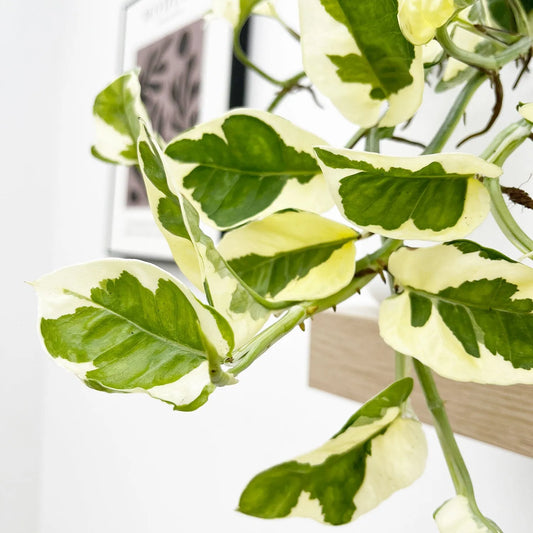Calathea Leaves Drooping: What is the Problem?
The leaves of a Calathea are one of the main reasons that so many houseplant lovers are drawn to this plant. Their almost painted patterns and ability to move throughout the day make them an impressive display that is great for the home.
Looking after a Calathea can be tricky, but luckily it is a plant that will tell you exactly when something is wrong with it. One of the main symptoms of there being a problem with your plant is when the leaves begin to droop and lose their luster. In this guide we will take you through everything you need to know about why your Calathea leaves are drooping and how to fix the issues.
Underwatering
The first sign that you have underwatered your Calathea is when the leaves begin to droop. This happens because the cells in the foliage lose their water content and cannot support the leaf enough. This is also a way to protect the foliage by reducing its surface area.
To check if your Calathea is underwatered you should first check that only the top few centimetres of the soil are dry. If more of the soil is dry then you need to up your watering schedule. Fixing an underwatered Calathea is really easy and you can have your plant back to its old self in a few hours.
- Soak your soil with plenty of water for a few minutes and allow it to drain out completely. This should completely revitalise your soil and have your plant back to its old self in a few hours.
Low humidity
Calathea plants are dependent on the humidity of your room to survive. They receive a large amount of their moisture through their leaves and they can only do that when there's moisture in the air to absorb.
When air humidity is low, your Calathea will actually end up losing moisture through its leaves and this will result in the plant drying up and beginning to wilt. The first thing to do in this situation is to check that the water has enough moisture in it since it is easy to confuse low humidity with underwatering and you can end up actually overwatering your plant. There are a few easy solutions to improving the humidity of your Calathea:
- Regularly mist the leaves with a spray bottle to apply humidity directly to the leaves. This will only keep your plant humid for a few houses so you will need to mist the leaves regularly.
- Place your plant on a water or pebble tray to keep the area around the plant more humid as the water in them evaporates. This is a good solution to keep your plant more humid in a smaller environment.
- Add a humidifier to your space. This will keep larger rooms more humid and is an ideal solution for bigger plants.
- Try grouping your Calathea with other tropical houseplants. These plants will release moisture vapor from their leaves and that can be absorbed by the other plants nearby. This creates a great tropical display of plants that are beneficial to each other.
Plant is rootbound
As your Calathea grows, it will produce more roots to support itself. You need to make sure that you are repotting your plant every one to two years in order to give the roots time to grow. If you don’t repot your plant often enough the roots will keep growing until they crowd the pot. When this happens, the roots take over the soil and leave no room for water or nutrients. As a result, the leaves of your Calathea will begin to droop and the plant's growth will drastically slow.
To identify a root bound Calathea, you will need to remove the plant from its pot. If all you can see is the roots then you have a plant that needs quick help. Luckily this is easy to fix by repotting the plant into a larger pot that will allow it to spread out its roots and continue to absorb more nutrients.
Another way to fix a rootbound Calathea is to propagate it by dividing the plant. To do this, divide the roots with a sharp, clean trowel or scissors. Make sure that each section you cut is attached to a stem and replant each in a new pot.
Repotting shock
Repotting a Calathea will cause a small amount of damage whether it was root bound or not. When this happens your plant will go into shock and stop taking in nutrients and water from the soil. This will cause the leaves to droop from the loss of energy and nutrition.
Calathea repotting shock will usually clear in a three to four weeks, but there are some things you can do to lessen the impact of repotting shock:
- Water the plant well after the initial reporting. This will help your Calathea adapt to its new environment.
- If you are regularly fertilising your plant, stop doing so just after repotting as it can burn new root growth. You should be able to start fertilising your Calathea again after about a month.
Dusty leaves
Over time, dust will accumulate on the leaves of your Calathea. This can increase the temperature of the foliage and stop it from photosynthesising. This will also stop the leaves from absorbing water from the air around the plant. All of this combined means your Calathea won't be receiving enough water or sunlight to maintain itself causing the leaves to droop.
The easiest way to stop your Calathea leaves getting dusty is to wipe them down with a tissue twice a week. You can also apply a small amount of neem oil to your Calathea to protect the leaves.










